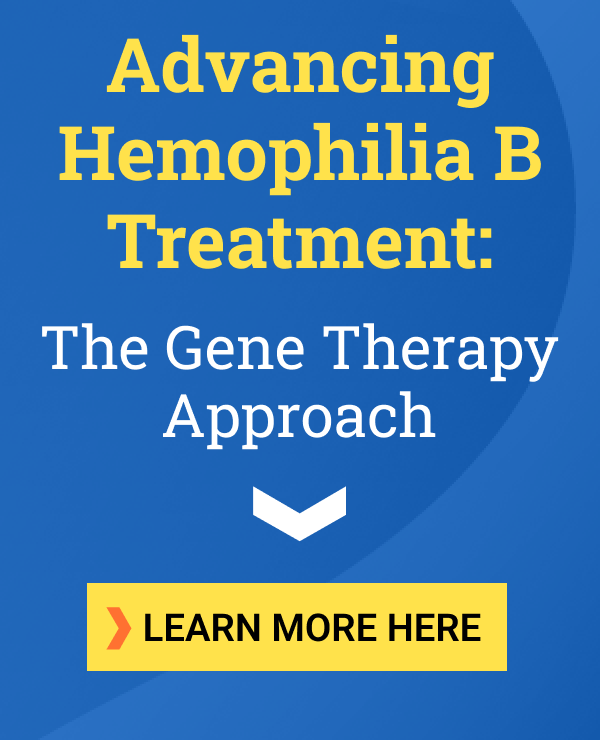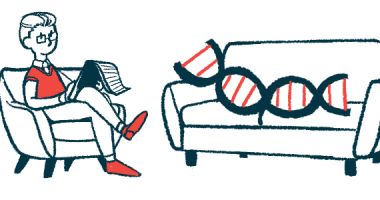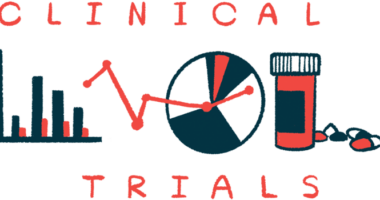PEGylation for hemophilia
Last updated Jan. 31, 2024, by Marisa Wexler, MS

What is PEGylation for hemophilia?
PEGylation is one of the molecular technologies that has been used to create extended half-life replacement therapies for hemophilia. These longer-lasting therapies don’t need to be administered as often, reducing the treatment burden for patients.
In hemophilia, mutations impair the production or activity of certain clotting factor proteins — factor VIII (FVIII) in hemophilia A and factor IX (FIX) in hemophilia B — that are needed to form blood clots and prevent bleeding. Replacement therapies, which are considered a mainstay of hemophilia treatment, are medications that deliver a functional version of the missing clotting factor to patients.
Conventional replacement therapies contain a version of FVIII or FIX that’s essentially identical to the naturally-occurring versions of these proteins. Because clotting factors aren’t naturally very stable in the bloodstream, traditional replacement therapies typically have to be administered quite often to ensure clotting factor levels remain high enough to prevent bleeds. When used for prophylaxis, or as a treatment to prevent bleeding episodes, most traditional replacement therapies have to be administered multiple times per week to be effective.
In recent years, scientists have developed extended half-life (EHL) factor replacement therapies. Compared with standard half-life replacement therapies, EHL products are more stable and long-lasting in circulation, and can therefore be administered less often. PEGylation is one of the methods that can be used to create EHL treatments, and has been employed in therapies for both hemophilia A and B.
How does PEGylation work in hemophilia?
PEGylation is a chemical process in which molecules of polyethylene glycol — a nontoxic compound derived from petroleum and commonly abbreviated as PEG — are attached to specific biologic molecules of interest, such as clotting factors.
This changes the physical, chemical, and pharmacological properties of the modified molecules. Generally, PEGylation can prolong the time molecules remain in circulation, protect them from being broken down by certain enzymes, and reduce their immunogenicity, or their ability to trigger an immune reaction. The process also can slow the rate at which they are eliminated from the body through the kidneys.
PEGylated clotting factors are less likely to be broken down and are more long-lasting in the blood than their naturally-occurring counterparts. Consequently, PEGylated factor replacement therapies can be administered less frequently than are conventional replacement therapies.
PEGylation in hemophilia therapies
Three EHL replacement therapies developed using PEGylation have been approved to treat hemophilia A: Esperoct, Adynovate, and Jivi. A fourth PEGylated replacement therapy, Rebinyn, has also been approved for treating patients with hemophilia B.
Esperoct
Esperoct (turoctocog alfa pegol), previously known as N8-GP, is approved in the U.S. and Canada to treat and prevent bleeds in adults and children with hemophilia A. The therapy, sold by Novo Nordisk, also is approved in Europe for hemophilia A patients ages 12 and older. Esperoct is administered via an intravenous or into-the-vein infusion. When used for routine prophylaxis, infusions are given every four days or twice weekly, depending on a patient’s age.
Adynovate
Adynovate (rurioctocog alfa pegol), previously called BAX 855, also is approved in the U.S. and Canada to treat and prevent bleeding episodes in adults and children with hemophilia A. In Europe, the therapy is marketed under the brand name Adynovi, and is approved for hemophilia A patients ages 12 and older. Adynovate also is given via intravenous injections, which are given twice weekly when the therapy is used for routine prophylaxis. The therapy is sold by Takeda Pharmaceuticals.
Jivi
Jivi (damoctocog alfa pegol), formerly known as BAY 94-9027, is approved in the U.S., Canada, and Japan, as well as in Europe, to prevent and treat bleeds in people with hemophilia A, ages 12 and older, who have previously received other lines of treatment. Developed by Bayer, Jivi also is given by an intravenous infusion. For routine prophylaxis, the recommended starting dosing schedule is twice per week, which can be adjusted to more or less frequent dosing based on patients’ responses.
Rebinyn
A treatment for hemophilia B, Rebinyn (nonacog beta pegol), previously called N9-GP, is approved in the U.S. to manage and treat bleeds in adults and children. The therapy, sold by Novo Nordisk, also is approved in Canada, and in Europe, where it’s sold under the brand name Refixia and is indicated for hemophilia B patients ages 12 and older. It’s administered via infusions into the bloodstream, which are given once weekly when Rebinyn is used for routine prophylaxis.
Experimental PEGylated therapies for hemophilia
Jiangsu Gensciences is now conducting clinical trials to test its experimental replacement therapy for hemophilia A, FRSW117, which contains a version of the FVIII protein modified with PEGylation, in addition to another technology called Fc fusion. The therapy is expected to be given once weekly to prevent bleeds in adults and adolescents.
The company also is developing another EHL replacement therapy for hemophilia B, based on PEGylation and Fc fusion called SS327, which is expected to be given every 10 to 14 days. SS327 is now in the early phases of clinical testing.
Hemophilia News Today is strictly a news and information website about the disease. It does not provide medical advice, diagnosis or treatment. This content is not intended to be a substitute for professional medical advice, diagnosis, or treatment. Always seek the advice of your physician or other qualified health provider with any questions you may have regarding a medical condition. Never disregard professional medical advice or delay in seeking it because of something you have read on this website.
Recent Posts
- Hemophilia A gene therapy superior to FVIII replacement in Phase 3 trial
- Addressing medical trauma in the hemophilia community
- Preparing for college means putting hemophilia in its place
- Giving thanks for the lifeline of the ADA on its 34th anniversary
- Altuviiio prevents bleeds in young children with severe hem A: Trial
Related articles







